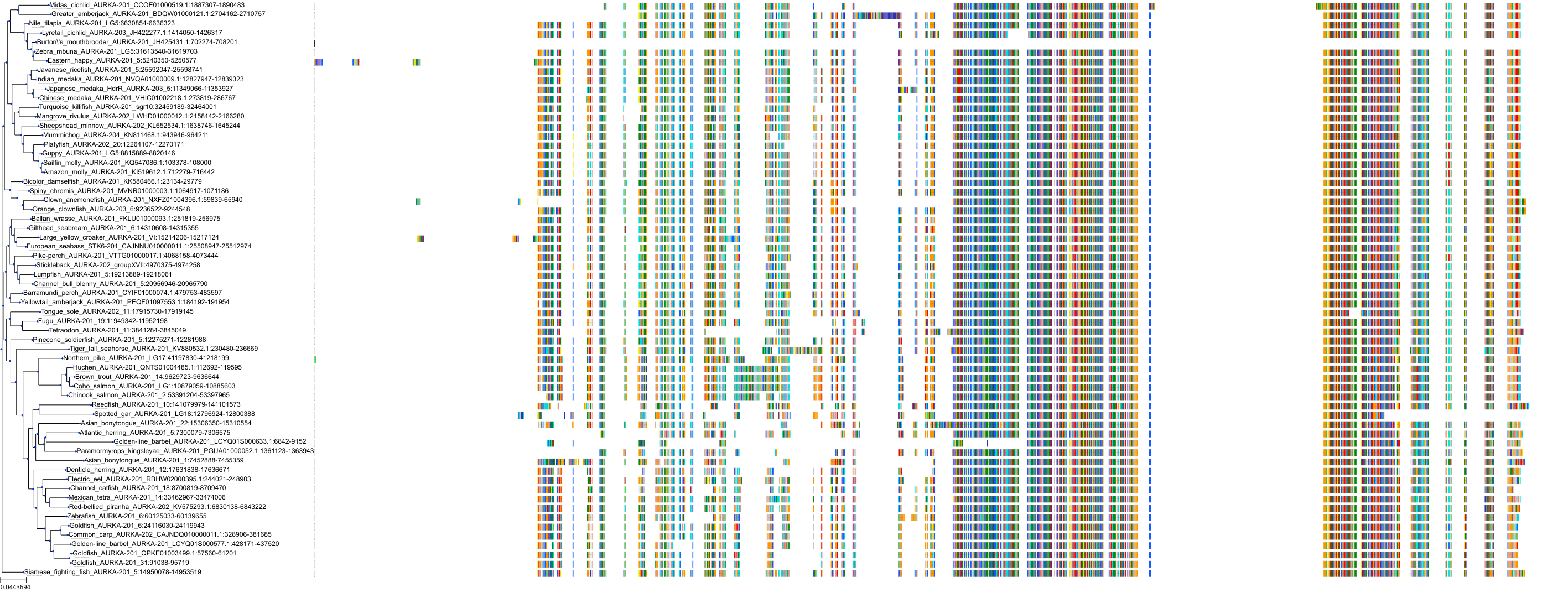|
Kinobeads (epsilon), multiple immobilized ATP-competitive broad spectrum kinase inhibitors, used to assess residual binding of ~300 proteins simultaneously from cell lysate in the presence of a compound. Quantitative readout performed by mass spectrometry.
|
Homo sapiens
|
62.0
nM
|
|
|
Kinobeads (epsilon), multiple immobilized ATP-competitive broad spectrum kinase inhibitors, used to assess residual binding of ~300 proteins simultaneously from cell lysate in the presence of a compound. Quantitative readout performed by mass spectrometry.
|
Homo sapiens
|
77.0
nM
|
|
|
Kinobeads (epsilon), multiple immobilized ATP-competitive broad spectrum kinase inhibitors, used to assess residual binding of ~300 proteins simultaneously from cell lysate in the presence of a compound. Quantitative readout performed by mass spectrometry.
|
Homo sapiens
|
121.0
nM
|
|
|
Kinobeads (epsilon), multiple immobilized ATP-competitive broad spectrum kinase inhibitors, used to assess residual binding of ~300 proteins simultaneously from cell lysate in the presence of a compound. Quantitative readout performed by mass spectrometry.
|
Homo sapiens
|
425.0
nM
|
|
|
Kinobeads (epsilon), multiple immobilized ATP-competitive broad spectrum kinase inhibitors, used to assess residual binding of ~300 proteins simultaneously from cell lysate in the presence of a compound. Quantitative readout performed by mass spectrometry.
|
Homo sapiens
|
0.1
nM
|
|
|
Kinobeads (epsilon), multiple immobilized ATP-competitive broad spectrum kinase inhibitors, used to assess residual binding of ~300 proteins simultaneously from cell lysate in the presence of a compound. Quantitative readout performed by mass spectrometry.
|
Homo sapiens
|
164.0
nM
|
|
|
Kinobeads (epsilon), multiple immobilized ATP-competitive broad spectrum kinase inhibitors, used to assess residual binding of ~300 proteins simultaneously from cell lysate in the presence of a compound. Quantitative readout performed by mass spectrometry.
|
Homo sapiens
|
11.0
nM
|
|
|
Kinobeads (epsilon), multiple immobilized ATP-competitive broad spectrum kinase inhibitors, used to assess residual binding of ~300 proteins simultaneously from cell lysate in the presence of a compound. Quantitative readout performed by mass spectrometry.
|
Homo sapiens
|
202.0
nM
|
|
|
Kinobeads (epsilon), multiple immobilized ATP-competitive broad spectrum kinase inhibitors, used to assess residual binding of ~300 proteins simultaneously from cell lysate in the presence of a compound. Quantitative readout performed by mass spectrometry.
|
Homo sapiens
|
724.0
nM
|
|
|
Kinobeads (epsilon), multiple immobilized ATP-competitive broad spectrum kinase inhibitors, used to assess residual binding of ~300 proteins simultaneously from cell lysate in the presence of a compound. Quantitative readout performed by mass spectrometry.
|
Homo sapiens
|
24.0
nM
|
|
|
Kinobeads (epsilon), multiple immobilized ATP-competitive broad spectrum kinase inhibitors, used to assess residual binding of ~300 proteins simultaneously from cell lysate in the presence of a compound. Quantitative readout performed by mass spectrometry.
|
Homo sapiens
|
25.0
nM
|
|
|
Kinobeads (epsilon), multiple immobilized ATP-competitive broad spectrum kinase inhibitors, used to assess residual binding of ~300 proteins simultaneously from cell lysate in the presence of a compound. Quantitative readout performed by mass spectrometry.
|
Homo sapiens
|
183.0
nM
|
|
|
Kinobeads (epsilon), multiple immobilized ATP-competitive broad spectrum kinase inhibitors, used to assess residual binding of ~300 proteins simultaneously from cell lysate in the presence of a compound. Quantitative readout performed by mass spectrometry.
|
Homo sapiens
|
343.0
nM
|
|
|
Kinobeads (epsilon), multiple immobilized ATP-competitive broad spectrum kinase inhibitors, used to assess residual binding of ~300 proteins simultaneously from cell lysate in the presence of a compound. Quantitative readout performed by mass spectrometry.
|
Homo sapiens
|
841.0
nM
|
|
|
Kinobeads (epsilon), multiple immobilized ATP-competitive broad spectrum kinase inhibitors, used to assess residual binding of ~300 proteins simultaneously from cell lysate in the presence of a compound. Quantitative readout performed by mass spectrometry.
|
Homo sapiens
|
388.0
nM
|
|
|
Kinobeads (epsilon), multiple immobilized ATP-competitive broad spectrum kinase inhibitors, used to assess residual binding of ~300 proteins simultaneously from cell lysate in the presence of a compound. Quantitative readout performed by mass spectrometry.
|
Homo sapiens
|
707.0
nM
|
|
|
Kinobeads (epsilon), multiple immobilized ATP-competitive broad spectrum kinase inhibitors, used to assess residual binding of ~300 proteins simultaneously from cell lysate in the presence of a compound. Quantitative readout performed by mass spectrometry.
|
Homo sapiens
|
6.0
nM
|
|
|
Kinobeads (epsilon), multiple immobilized ATP-competitive broad spectrum kinase inhibitors, used to assess residual binding of ~300 proteins simultaneously from cell lysate in the presence of a compound. Quantitative readout performed by mass spectrometry.
|
Homo sapiens
|
473.0
nM
|
|









